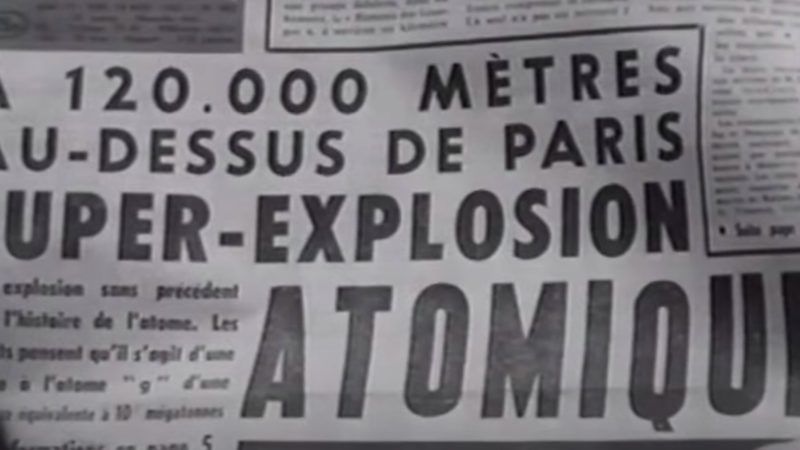The Invisible Dystopia
Friday A/V Club: When the post-apocalyptic world looks a lot like the pre-apocalyptic world

"Our mass culture is driven by screened entertainment," the science fiction novelist Neal Stephenson told The Wall Street Journal last week, "so there's a tendency to tell stories in a way that looks good on screens. I think there is an overreliance on dystopia that is fundamentally driven by art direction and production design."
The result, Stephenson argued, is that we've
gotten used to a particular way of thinking about dystopia—and that's not what we've got, right? We've ended up with something that is very non-cinematic. With few exceptions, anywhere in the world affected by Covid-19, you can go out and walk down the street, drive around, look at stuff. And aside from the fact that there aren't as many people out and a lot of people are wearing masks, nothing looks different. There are no collapsed buildings or crashed trains or any of the other visual markers that you would see in a movie to tell you that a disaster has happened here.
Is it possible to make a cinematic take on a non-cinematic disaster? I can think of one movie that tried: The New World, Jean-Luc Godard's 20-minute contribution to the otherwise forgettable 1963 anthology film Ro.Go.Pa.G.
I'm not a huge Godard fan, but I like some of his '60s movies, and this short is probably the best of those. It imagines a post-apocalyptic Paris that looks almost exactly like the pre-apocalyptic city; the differences are in how people behave. The results are eerie and odd, playing like a subtly surreal episode of The Twilight Zone. Here's the first half…
…and here's the rest:
(For past editions of the Friday A/V Club, go here. For another installment with a French New Wave connection, go here.)
Editor's Note: As of February 29, 2024, commenting privileges on reason.com posts are limited to Reason Plus subscribers. Past commenters are grandfathered in for a temporary period. Subscribe here to preserve your ability to comment. Your Reason Plus subscription also gives you an ad-free version of reason.com, along with full access to the digital edition and archives of Reason magazine. We request that comments be civil and on-topic. We do not moderate or assume any responsibility for comments, which are owned by the readers who post them. Comments do not represent the views of reason.com or Reason Foundation. We reserve the right to delete any comment and ban commenters for any reason at any time. Comments may only be edited within 5 minutes of posting. Report abuses.
Please to post comments


Darn, when I saw the French newspaper I thought I'd be able to skip the subtitles, but then...Italian!
Looks to me like the only thing about the new world is that in it, this guy's a self-absorbed, paranoid jerk. Or maybe he was always that way, since we didn't get to see much of him before.
And those aren't pills they're taking; they're mints. So this guy's the only one who doesn't care about fresh breath.
Sorry, but Henri The Cat was better.
That's cute. And funny.
Yeah, I really think that this is so funny
So—nuclear radiation makes people flaky and noncommittal?
I thought it created fifty-foot men and gigantic bugs.
I’am made $84, 8254 so far this year working online and I’m a full time student. Im using an online business. Here what I do,.for more information simply open this link thank you… .ReadMore.
So THAT's what nuclear radiation does. Apparently it's good for business.
"With few exceptions, anywhere in the world affected by Covid-19, you can go out and walk down the street, drive around, look at stuff. And aside from the fact that there aren't as many people out and a lot of people are wearing masks, nothing looks different. There are no collapsed buildings or crashed trains or any of the other visual markers that you would see in a movie to tell you that a disaster has happened here."
Holy shit what a room temperature IQ. It's been like 3 months, buddy